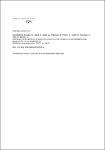Distribution and expression of porcine endogenous retroviruses in multi-transgenic pigs generated for xenotransplantation
Dieckhoff, Britta
Kessler, Barbara
Jobst, Danny
Kues, Wilfried A.
Petersen, Björn
Pfeifer, Alexander
Kurth, Reinhard
Niemann, Heiner
Wolf, Eckhard
Denner, Joachim
Background: Multi-transgenic pigs produced for use in xenotransplantation have to be screened for the presence and expression of porcine endogenous retroviruses (PERV) to select animals with low PERV load. The production of transgenic pigs may also be associated with the integration of the transgene adjacent to or into the locus of a PERV provirus, potentially leading to an enhanced virus expression. Methods: Non-transgenic animals, single-transgenic, and multi-transgenic pigs were screened for the presence of PERV-A, -B, and -C and recombinant PERV-A/C using polymerase chain reaction (PCR). PERV expression was determined by real time reverse transcriptase-PCR. An assay based on the activation of PERV in peripheral blood mononuclear cells by mitogens was used to discriminate between low and high PERV producer animals. Results: All animals carried PERV-A and -B. A total of 176 from 181 (97.2%) animals carried PERV-C in the germ line and 18 from 64 animals carried PERV-A/C in the genome of lymphoid cells but not in the germ line. The expression of PERV was very low in all animals and not different between transgenic pigs and non-transgenic animals. PERV expression differed between various pig lines. The highest expression was found in mini-pigs and crossing other pig lines with mini-pigs resulted in increased PERV expression in the progeny. However, expression of viral proteins and particle release were not observed in all transgenic animals. Conclusions: No evidence for elevated PERV expression in (multi-) transgenic pigs was observed. Differences in PERV expression correlated with the genetic background of the animals, not with the specific transgene. Mini-pigs consistently had the highest level of PERV expression and animals with a mini-pig background had a higher level of expression compared with animals without mini-pig background.
No license information

